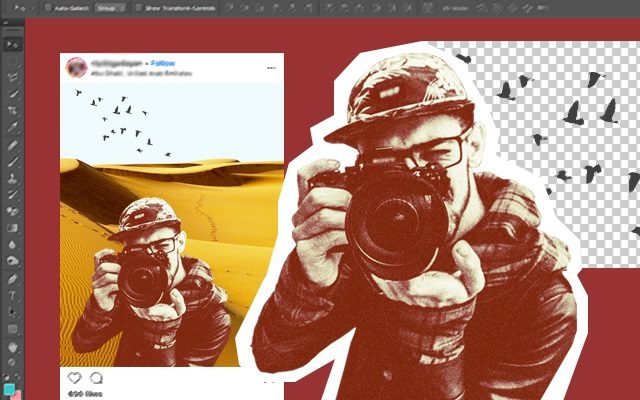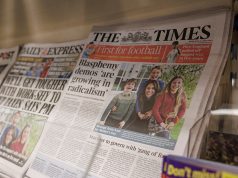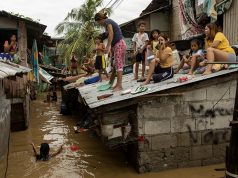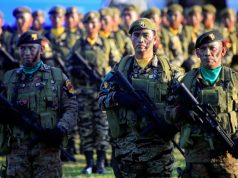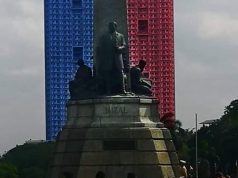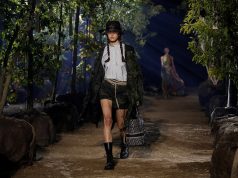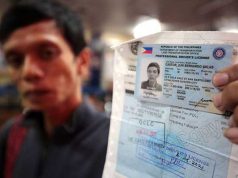A freelance photographer pleaded Twitter users to retweet a batch of photos he worked on to help him reach his dreams. The plea made the rounds online, with thousands of retweets on the microblogging network.
Clyde Gadayan, who introduced himself as a freelance photographer based in Bacolod City, received praise online for his surreal travel photographs with perfectly timed compositions. Subjects in his photos seem to move slowly before towering structures in Dubai and Japan rising against a pinkish orange sky.
But a Twitter user who zoomed into the photographs noticed that they are made up of separate photos apparently cut up on Photoshop, but “poorly” done.
Gadayan received criticisms for manipulating the images and apparently passing them as travel pictures. Some even doubted if he took the elements in the photos himself or even traveled to the places.
Denying that he misrepresented himself, Gadayan said he was the one who took the photographs before he put them together to form one compelling image.
“I have never shied away from admitting that I use Photoshop to manipulate my photos, in fact, I see it as another step to make my pictures look better,” Gadayan wrote in a Twitter post on June 20.
MY TAKE ON THE WHOLE SITUATION. PLEASE READ ⬇️⬇️⬇️ pic.twitter.com/hvhfZqRLLA
— Clyde (@Clydeg_) June 21, 2018
Addressing those who questioned the authenticity of his travels, Gadayan insisted that he had been to the places featured in his photos, with Instagram stories and video blogs to back up his claim,.
‘Unfair’ criticisms
For Gadayan, the criticisms were “uncalled for” and “unfair” after the effort he had put into to produce his visuals.
“I wouldn’t normally let it affect me, but going after my work which I spend hours on and pour my heart out to is unfair,” Gadayan said.
In response to the argument, one user clarified that the problem lies with the way Gadayan presented himself as a “photographer” and not as a photo illustrator.
“We ain’t criticizing you for editing your photos, we’re criticizing you for calling yourself a photographer when that isn’t even the focus of your work. You are a photo editor/manipulator, so call yourself as such,” the user said.
we ain't criticizing you for editing your photos, we're criticizing you for calling yourself a photographer when that isn't even the focus of your work. you are a photo editor/manipulator, so call yourself as such. pic.twitter.com/0UhDoRah6B
— ?; sugar gay? (@vnlecm) June 21, 2018
In an interview from Inquirer Pop, Gadayan revealed that he integrates elements of two different photos of tourist spots he took to achieve the desired results in his work.
The resulting image, however, would be inaccurate in its depictions of a place’s geography and attributes.
Ethics in photojournalism
While Gadayan does not claim to be a photojournalist, the public’s expectations of photographers are often consistent with ethical guidelines observed by professional lens men.
The code is “also meant to serve as an educational tool both for those who practice and for those who appreciate photojournalism.”
The National Press Photographers Association requires accurate representations of the subjects of the photos with no interventions from the photographers.
Similarly, keeping the integrity of the image’s content is part of the code of ethics of the Photojournalists’ Center of the Philippines.
This was not the first time that many people had been confused by “photoshopped” content from original work.
Last year, Nikon and Chay Yu Wei, the photographer whom Nikon declared as the winner of a photography contest, drew flak from professional photographers for giving an award to an altered image.
Cosmopolitan Philippines also received a slew of criticisms for editing photos of Riverdale actresses Lili Reinhart and Camila Mendes to make them look thinner.

